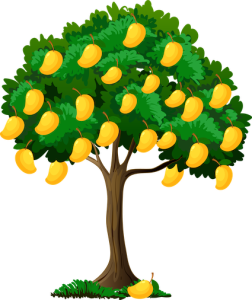
Level 1. Lesson 2. Wrapping up beat.
![]()
![]() Woodblock
Woodblock
Difficulty: ![]()
Prior learning: None
Prepare: Rhythm Present: Practice: Beat
![]() Students will sing, develop confidence in pitch and melody, and enhance coordination by integrating simple movements with the song.
Students will sing, develop confidence in pitch and melody, and enhance coordination by integrating simple movements with the song.
 Questions
Questions
- What do stars do at night?
- What do you think a star is?
- Is our sun a star?
- Sing the first line of the song slowly and clearly. Ask the students to echo the line back to you.
- Continue teaching line by line until they can sing the whole song with you.
- Sing the song together several times and encourage students to sing confidently and in tune.
- Use gestures to represent the lyrics (e.g., make twinkling motions with fingers for "Twinkle, twinkle" and point upwards for "little star").
- When secure, clap the beat of the song as students sing along.
- If the song has previously been introduced as repertoire, divide the class into two groups: One group claps the beat.
- The other group claps the rhythm of the words (the way the words go).
- Switch roles so everyone experiences both parts.
![]() Lyrics
Lyrics
Twinkle, twinkle, little star,
How I wonder what you are.
Up above the world so high,
Like a diamond in the sky.
Twinkle, twinkle, little star,
How I wonder what you are.
 Success Criteria
Success Criteria
- I can sing confidently and in tune.
- I can match my hand movements to the words of the song.
- I can clap the beat or rhythm accurately while singing.
- I can work with my classmates to perform the song with actions.
![]() Students will learn to improvise lyrics for a familiar song, developing creativity and understanding of musical phrasing.
Students will learn to improvise lyrics for a familiar song, developing creativity and understanding of musical phrasing.
 Success Criteria
Success Criteria
- I can suggest new words to replace the original lyrics of a song.
- I can work with a partner to create and perform a new version of the song.
- I can sing my improvised lyrics in tune with the melody.
- I can confidently share my creativity with the class.
 Questions
Questions
- Do you like changing the words of songs?
- Can you think of a song that would be very funny if you changed the words?
- What has been your favourite song with new words?

- Sing Apple Tree as a class, ensuring everyone knows the melody and rhythm. Clap the beat together while singing to establish the foundation.
- Sing the original song and replace apple with another word (e.g., "Mango tree, mango tree, will your mangoes fall on me?").
- Ask students to suggest other objects or ideas they can substitute for apple (e.g., pear, balloon, star).
- Write their ideas on the board for inspiration.
- Sing the song as a group, using a different word from the list each time.
- Add hand motions or gestures that match the new word (e.g., mimicking picking a fruit or catching a balloon).
- Divide students into small groups. Each group chooses a new word and creates a unique song version.
- Groups perform their improvised versions for the class.
- Encourage everyone to sing along with the new lyrics and movements.
- Extension: Challenge students to add movements to represent the new lyrics (e.g., climbing for ladder tree or throwing for ball tree).
- Art Activity: Have students draw their new tree ideas, decorating them with the objects or concepts they added to the song.
- Discuss how changing one word can make a familiar song feel new and creative.
- Encourage students to think of other ways to improvise with their favourite songs.
![]()
Students develop beat accuracy and phrasing awareness through handbells and vocal responses while practising singing and creative expression.
- Teach the song to the class while seated, using a pair of small handbells to mark the first beat of each bar as you sing.
- Explain that the bells will not keep the beat all the time but only on the first beat of each measure.
- Sing the song and demonstrate the actions, encouraging students to watch and listen carefully.
- Once the students have learned the melody and actions, have them sing along with you.
- Select a student and hand them the set of bells. Guide them to attempt to keep time with the class as they sing.
- The rest of the class should pretend to have their own chimes, using their hands to "play" the beat in time with the song.
- Next, ask the students to silently make a wish as they sing. After the verse, sing, "What do you wish for?" and invite one student to respond with a creative wish (e.g., "I wish for a unicorn").
- Rotate with other students.
 Success Criteria
Success Criteria
- I can sing the song while keeping the beat with the handbells on the first beat of each bar.
- I can pretend to play my own chimes and keep in time with the beat.
- I can make a creative wish that fits within the timing of the song.
- I can listen carefully to see if my wish matches the phrasing of the music.
![]() Lyrics
Lyrics
Starlight, Star bright,
First star I see tonight.
Wish I may wish I might,
Have the wish I wish tonight.
 Questions
Questions
- Do you like changing the words of songs?
- Can you think of a song that would be very funny if you changed the words?
- What has been your favourite song with new words?

![]() Students will learn to maintain a steady beat by playing the note F while singing a familiar song.
Students will learn to maintain a steady beat by playing the note F while singing a familiar song.
![]() Lyrics
Lyrics
Bounce high, bounce low.
Bounce the ball to Shiloh.
 Questions
Questions
- How does playing the instrument help us keep the beat while singing the song?
[Encourages students to consider the relationship between playing and maintaining a steady beat.] - What happens if we play the note faster or slower than the beat?
[Helps students identify the importance of staying in time.] - How did it feel to play and sing at the same time? Was it easier or harder than just singing?"
[Promotes self-reflection on their coordination and musical skills.]
- Distribute instruments to groups of students.
- Sing "Bounce High" with the class to ensure familiarity with the melody and lyrics.
- Clap or pat the steady beat as you sing to highlight the beat.
- Show students the F bar on the glockenspiel or xylophone.
- Demonstrate playing F gently, striking the bar with alternating hands for a smooth sound.
- Play the F bar in time with the beat as you sing the song.
- Encourage students to watch your hands and listen carefully to keep in time.
- Have the groups practice playing the beat on F together while singing the song.
- Gradually divide the class: Group 1: Plays F on the beat. Group 2: Sings the song.
- Switch roles so everyone experiences both playing and singing.
 Success Criteria
Success Criteria
- I can sing the song with confidence.
- I can play the note F to keep the beat.
- I can combine singing and playing with my classmates.
![]()
Students will learn to connect beats with visual representations using a familiar song, Snail Snail, to enhance their understanding of beat and notation.
- Sing Snail Snail as a class, clapping the beat while singing.
- Review the concept of the beat and how each beat is steady like a clock ticking.
- Distribute writing books or printed sheets to students.
- Have students place the books or sheets on their laps and follow along as you sing and clap Snail Snail.
- Point out the pictures of snails and explain that each snail represents one beat of the song.
- Point to each snail as you sing, ensuring they visually connect each song note with the corresponding graphic.
- Divide the class into small groups or pairs.
- Assign each group to sing the song and point to the snails while one member claps the beat.
- Ask individual students to demonstrate by singing, clapping, and pointing to the snails on their sheets or books.
- Provide gentle feedback and encouragement to improve confidence and accuracy.
![]() Lyrics
Lyrics
Snail, snail, snail, snail,
Goes around and round and round.
 Questions
Questions
- How many snails can you see?
- How many beats are in the song?
- Have you ever seen a real snail?
 Success Criteria
Success Criteria
- I can clap the beat accurately while singing Snail Snail.
- I can point to the snails on the graphic or in my book in time with the beat.
- I can sing the song while following the visual representation of each beat.
- I can confidently demonstrate the connection between sound and visual representation in small groups or individually.
![]() Students will develop coordination, teamwork, and musicality by participating in a collaborative circle game with structured body movements.
Students will develop coordination, teamwork, and musicality by participating in a collaborative circle game with structured body movements.
![]() Lyrics
Lyrics
Clap, clap, clap your hand,
Clap your hands together.
Pat, pat, pat your head
Pat your head with one hand.
- Gather the students in a circle, ensuring they stand apart with enough space to move freely.
- Begin singing the song's melody, and the class should join in.
- Remind students to keep to a steady beat.
- Introduce the body movements for each line, demonstrating each action.
- Line 1: Instruct students to clap their hands to the beat as they sing.
- Line 2: Encourage students to shake their bodies rhythmically while singing.
- Line 3: Have students hold hands and form a connected circle.
- Line 4: At "then you cut the cake," demonstrate a chopping motion to symbolise breaking the circle. The two students on either side of the break should run outside the circle in opposite directions.
- As the two students run, the rest of the class continues singing and holding the circle.
- When the runners meet, they hold hands and rejoin the circle, and the game begins again with a new pair of students.
- Invite students to suggest new actions for each line of the song.
 Success Criteria
Success Criteria
- I can sing the song and perform the correct body movements in time with the music.
- I can follow the group’s lead to hold hands and break the circle at the right moment.
- I can run and rejoin the circle accurately while keeping the game flow steady.
 Questions
Questions
- What movement did you enjoy the most while singing the song?
- How did you keep the beat while clapping or shaking your body?
[Encourages them to think about their physical movements and the beat.] - Did you notice if everyone was keeping the beat together? Why is that important?
[Prompts awareness of group coordination and the importance of staying in time.]
![]() ASSESSMENT QUESTIONS
ASSESSMENT QUESTIONS
- The student can maintain a steady beat while singing or playing percussion in time with the group.
- The student can demonstrate coordination between their singing and instrumental playing or movement activities.
- The student can actively participate in group activities and show creativity when improvising or adapting lyrics and movements.

Suggested lessons
Y1. Beat II

Y1. Beat III

Y1. Beat IV

